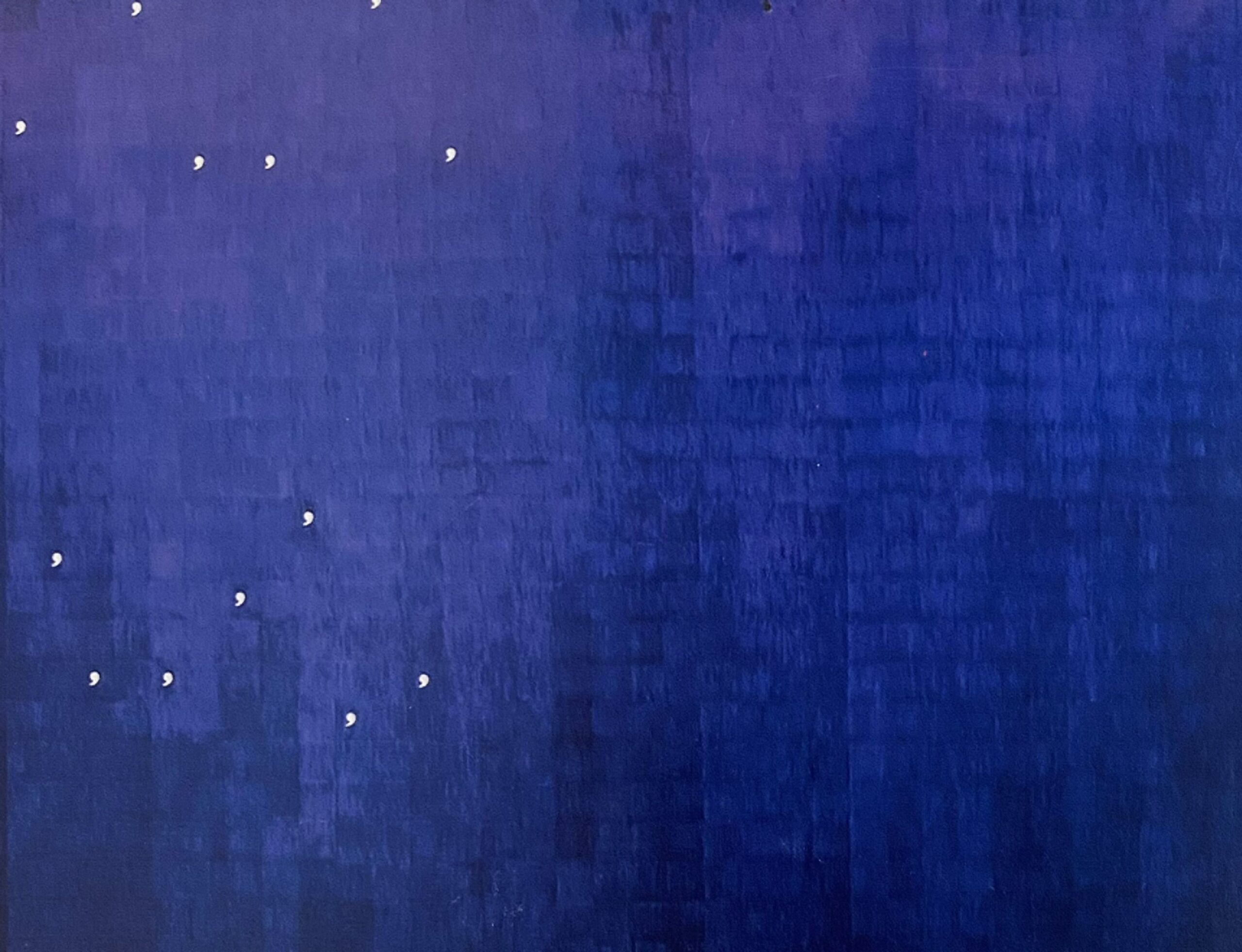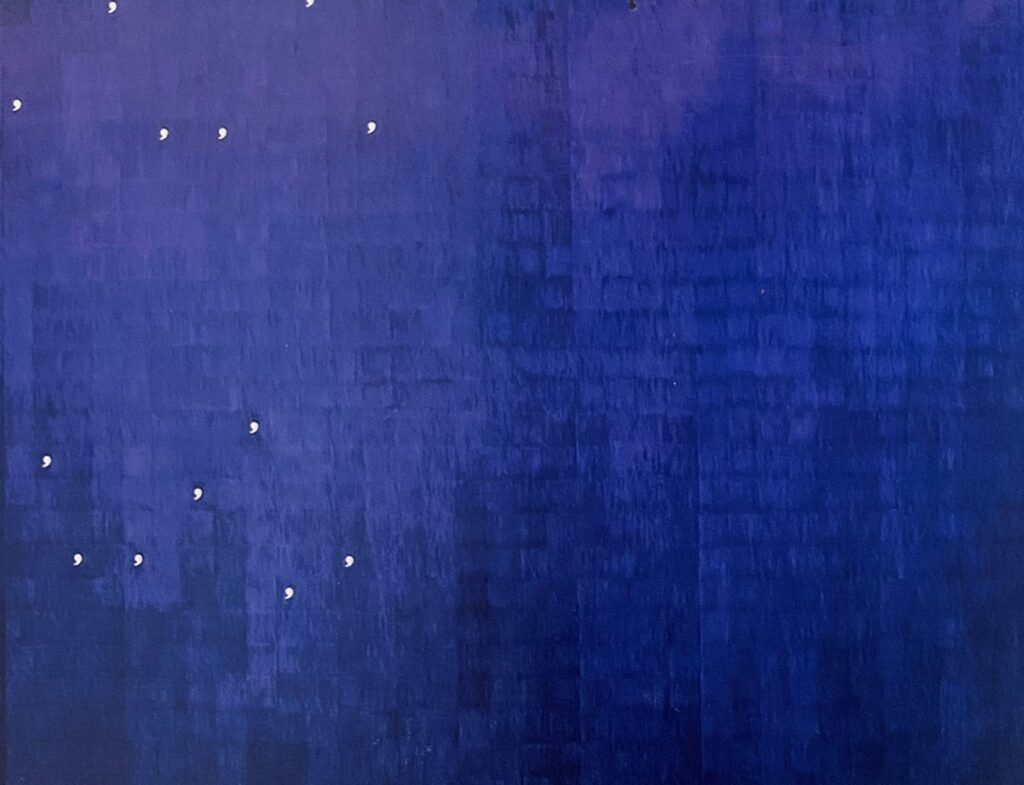Alighiero e Boetti


Past exhibition
Alighiero e Boetti
About the Exhibition
The Arts Club of Chicago is pleased to announce the opening of an Alighiero e Boetti exhibition. One of the most elusive artists associated with Arte Povera, Alighiero Boetti (1940–1994; also known by his self-designated name, Alighiero e Boetti (Alighiero and Boetti)) has been variously described as an abstract artist, a figurative artist, a conceptualist and minimalist, a performer, philosopher, musician, and amateur mathematician. The exhibition gives an overview of the artist’s multifaceted artistic production by featuring works from the 1970s and 1980s: a postal work, several important embroidery pieces, and a number of ball-point ink drawings. This is the first solo exhibition of Alighiero e Boetti’s work in Chicago.
Although Boetti had no formal art training, he became interested in contemporary art through a series of exhibitions he attended in his home city of Turin, and on visits to France between 1960 and 1965. By 1967, the young artist had his first solo exhibition and was showing often with artists Lucio Fontana, Piero Manzoni, Mario Merz, Giulio Paolini, Michelangelo Pistoletto, and Jannis Kounellis. But Boetti, unlike most of the Arte Povera artists who were fixated on investing minimalist forms with magical or alchemical meanings, was always more concerned with language, humor, process, temporality, order versus disorder, and the social/collaborative aspects of making art.
Also unprecedented in the Italian art world at the time was Boetti’s immersion in a non-Western culture: Afghanistan. The artist visited the country in 1971, and returned at least twice a year until the Soviet invasion in 1979, going so far as to open what he termed a “One Star Hotel” in Kabul. The embroidered tapestries he commissioned from Afghanistan and Pakistan weavers between 1971 and 1994 are perhaps the artist’s most well-known pieces. Boetti would lay out their designs—world maps, mottoes, symbols—and the weavers would decide on coloration. In his first embroidery piece, 16 dicembre 2040 11 luglio 2023 from 1971, two dates have been embroidered using a traditional Suzanni embroidering technique. The first date is the centenary of his birth and he dreamt the second date would be that of his death. The square embroideries reflect upon the infinite possibilities of life and the temporal dimension of reality. Boetti explored the idea of maps from 1971 until his death. In Map of the World (Mappa del Mondo) from 1989, a seven-foot-long tapestry, a world map is embroidered with a symbol of each national flag where space allowed. An embroidered border contains a text by the artist as well as phrases in Farsi. As time passed, the colors and symbols of flags were updated. The distribution of the continents and nations and their coloring is the result of a process that implies order and disorder (the borders of nations and continents versus the ongoing flux of nations), chance and necessity (the coloring chosen by the weavers versus the “found” lines of a map). Ordine e Disordine (Order and Disorder), 1985–86, is an embroidered work composed of 199 square elements, each measuring approximately seven inches per side. In each component the letters of the words order and disorder are arranged vertically in sans-serif type in four rows of four letters. Each letter and its ground have been embroidered in brilliant colors chosen by Afghan weavers. One block of 100 elements is hung in a strict modernist geometrical pattern, the other block of 99 is installed in a loose constellation. Overall, there is a constant oscillation between figure and ground, legibility and unreadability, chance and design. Tutto (Everything), 1991–92, a tapestry in 94 colors, contains an indefinite number of shapes—abstract figures, random shapes, numbers, various languages, and signs—in a mosaic pattern. The title refers to Boetti’s desire for inclusiveness and the encyclopedic, together with his desire for proliferation and multiplicity.
In 1969, Boetti began to create complex postal works. By using an existing system (the post office), Boetti incorporated the element of chance in his work. One of his first postal pieces, Untitled (Victoria Boogie Woogie), 1972, is made up of 42 framed postal collages, each containing 120 self-addressed, stamped envelopes of seven stamps per envelope. The letters were all mailed by the artist from different cities to himself in Turin. The number 5040, or (120 x 42 panels), or (7 x 6 x 5 x 4 x 3 x 2 x 1), was the number of permutations that could be derived from a sequencing of the seven Italian stamps, totaling 200 lire of postage. The structural framework of Boetti’s postal works was inspired by the materials and actions of everyday life. The result is metaphoric and spectacularly visual, while the exploding grid and decorative syncopation of these stamps allude to the Mondrian painting referenced in the work’s title.
Boetti made his first ballpoint ink drawings (also called “Biro” drawings after the type of pens used) in 1972–73. I sei sensi (The Six Senses), 1973, is part of a series of drawings done in code. An alphabet is laid out on the left side of the paper, forming an index. Commas, laid out horizontally, correspond to each letter of the alphabet. The “meaning” of the piece may be read by following the progressively arranged commas in relation to the letters. In the case of I sei sensi, Boetti has spelled out in Italian the five senses—vedere (to see), gustare (to taste), toccare (to touch), dire (to hear), odarare (to smell)—and one added by the artist: pensare (to think).